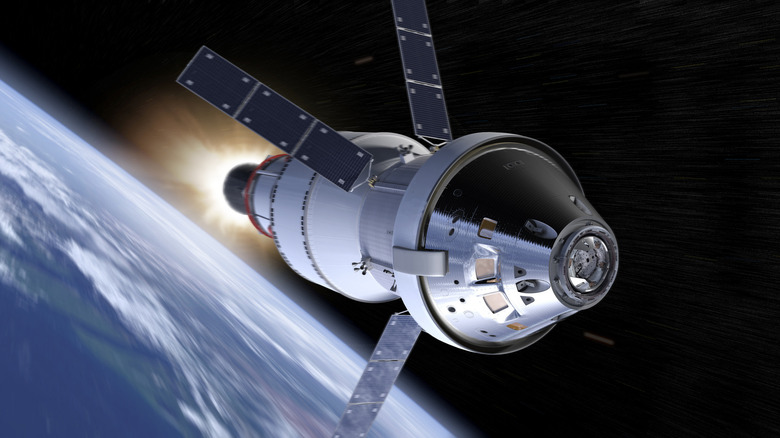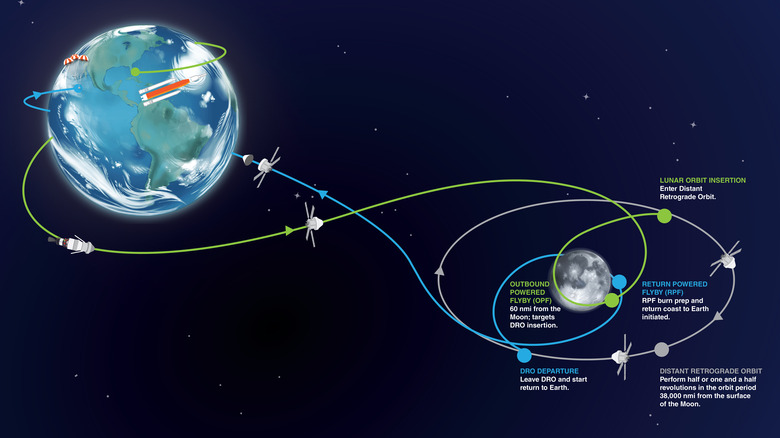NASA's Orion Capsule Has Made It To The Moon, Completing Its Closest Lunar Flyby
NASA's Orion spacecraft, on an uncrewed flight around the moon for the Artemis I mission, has made its closest approach to the moon. Early in the morning of Monday, November 21, the Orion spacecraft passed within 81 miles of the moon, traveling at 5,102 miles per hour. Orion is now on its way past the moon, headed toward an orbit on the distant side of the moon.
Orion used the moon's gravity to help speed it up and push it on its way into orbit. It did this by performing a burn, or engine firing, which adjusted its course. The first outbound powered flyby burn occurred at 7:44 a.m. ET, lasting for two and a half minutes.
To help the spacecraft reach its orbit it will need to perform a second burn past the moon, scheduled for Friday, November 25. This will push it into an orbit called a distant retrograde orbit, in which the spacecraft orbits the moon in the opposite direction to the direction that the moon orbits around Earth. This orbit allows the spacecraft to use minimal fuel while it spends around a week orbiting the moon.
Orion launched using the new Space Launch System rocket last Wednesday, November 16. The rocket took off from the Kennedy Space Center in Florida, carrying the Orion spacecraft through Earth's atmosphere and setting it off on its journey to the moon.
Aims of the Artemis I mission
The Orion spacecraft is traveling around the moon for the Artemis I mission, part of NASA's long-term Artemis program. The idea is to test out new equipment like the Space Launch System rocket and Orion spacecraft in an uncrewed mission to ensure that they are safe and work as expected. The next phase of the program, called Artemis II, will be to send a crew in the Orion spacecraft into orbit around the moon. Then Artemis III will involve a crewed mission landing on the moon for the first time in more than 50 years. Currently, Artemis III is planned for 2025 (per Space News).
As well as testing out the new hardware, there are also some scientific aims to the current Artemis I mission. Included in the Space Launch System launch were 10 small satellites, called CubeSats. These satellites included missions to study ice on the moon with the Lunar IceCube mission, a project called the Near Earth Asteroid Scout which will use solar sailing to fly by a small asteroid, and the BioSentinel mission which will investigate what happens to live organics in the form of yeast when they're exposed to space radiation.
These CubeSats are separate from the Orion spacecraft and have already been deployed. Orion will have its own research onboard as well, such as dummies which will be used to measure how much radiation future human astronauts could be expected to be exposed to on lunar missions.

